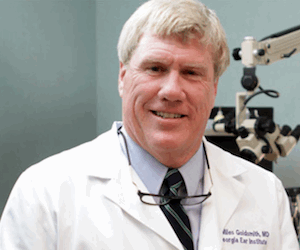FDA PSAP Revision Suggestion – Part III
This is the final post on PSAPs from an article submitted to Hearing Health and Technology Matters by Miles Goldsmith, MD, opposing the Draft Guidance for Industry and Food and Drug Administration Staff of November 7th, 2013. In this post, Dr. Goldsmith builds on suggestions in his two previous posts as to why he feels the FDA Marketing and Labeling Guidelines should be revised in general, relating to both PSAPs and hearing aids.
Wayne Staab, Section Editor
Why the Proposed New FDA Marketing and Labeling Guidelines Need Revision
By Miles Goldsmith, MD
The PSAP industry is clearly providing a major benefit in the hearing health care market. As such, it has ironically threatened the hearing aid industry, which fears that the lower price structure of this market will drive hearing aid prices down. To the contrary, I argue, and have successfully demonstrated in my own practice, that PSAPs serve as “enticements” to the audiology/hearing aid industry. That is to say, by purchasing a lower cost PSAP the consumer will at least enter this market; acclimate to a hearing instrument; begin auditory training, and, in many cases, will later advance to a conventional hearing aid. If the consumer is denied the opportunity of experimenting with this more affordable hearing system, he/she will likely delay entering this market given what they feel is a prohibitive price structure of hearing aids.
Is Differentiation Between PSAPs and Hearing Aids a Simple Task?
It is my understanding that the primary thrust of the FDA in this arena is assuring safety and efficacy of hearing health care for the consumer. As previously elaborated in my treatise, the marketplace should ultimately define the quality of both PSAPs and hearing aids. Clearly, entering the PSAP market depends heavily upon promotional marketing, which must refer to hearing issues in order to capture the attention of those in need of hearing assistance. The new proposed guidelines have expanded the restrictive language for PSAP promotions in an overreaching way. This clearly threatens a burgeoning industry that is providing a safe, effective, and affordable hearing benefit to those in need.
The new restrictions on promotional marketing are in some instances inaccurate in their representation of what differentiates people with “hearing loss” from “normal hearing individuals who may need assistance in certain situations.” The semantic word dance here often borders on absurdity, as the new guidelines differentiate hearing loss on the basis of ability to hear soft sounds “ at a distance” versus “nearby.” What constitutes nearby versus at a distance? Is it 10 feet, 25 yards, or 100 yards?
In the 2009 document, FDA listed “listening to a performance” as acceptable marketing language for PSAPs. In the new guidelines, it appears that “listening to dialogue in a movie theater” crosses the line. What about an opera or a Broadway musical? Do the latter instances constitute acceptable “performances” or are they more like “dialogues in movies?” Or does it all depend on whether these performances are nearby or distant…or, where you are seated?
Similarly, if one uses a hearing instrument for “everyday use,” rather than occasionally, that seems to imply that you have crossed the line into hearing loss territory. For example, if I use my PSAP every day to listen to “soft sounds at a distance,” does that imply that I have a hearing loss? Or must I use a hearing aid for this since it is an “every day use?”
It is well documented that normal hearing people have trouble hearing in competitive noise. Why should we deny them an affordable technology to help them deal with this? In other words, must one have hearing loss in order to benefit from directional microphones and/or other noise cancellation technologies? There is clearly no compelling safety and efficacy issue here. The new guidelines are thus overreaching in this regard, and beg the question as to whom FDA is protecting here. Is it the consumer? Or, is it a special interest group within the hearing aid industry?
Do Consumers Have a Right to Hear?
Particularly in these economic times where affordable access to health care is sharply in focus in our public arena, these new proposed guidelines warrant careful re-examination and revision. In their current form, they clearly threaten the viability of an industry that seeks to provide affordable hearing health care to a population that is clearly benefiting from this effort. Please do not deny them their right to hear.







